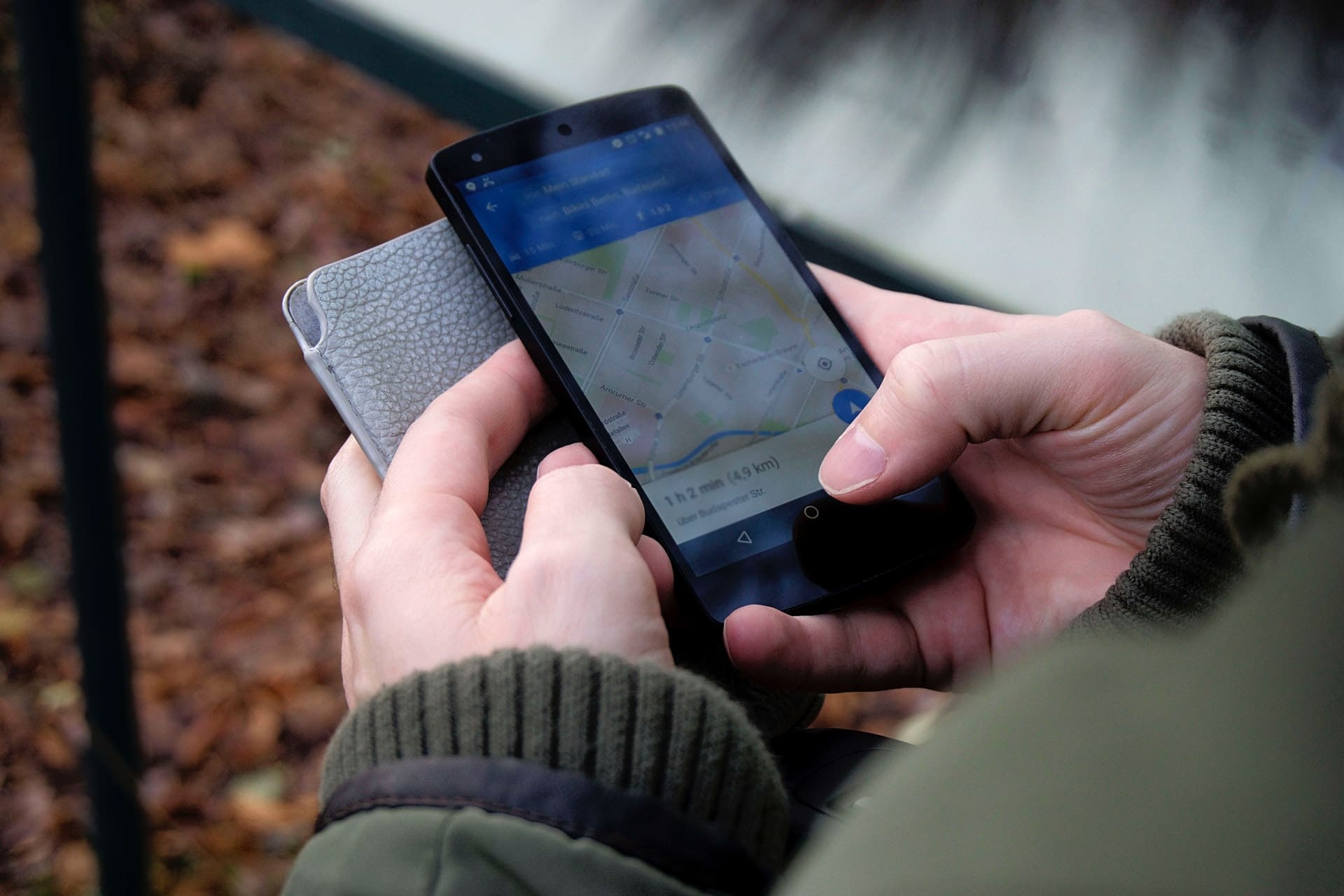Local marketing is a secret weapon that is often forgotten about. Or deemed a tool suitable only for tradesmen and restaurants. But it’s time to give it the recognition it deserves (if you want to strengthen your marketing efforts of course). If you’re not familiar with local digital marketing and how it could have a positive impact on your company, continue reading. Contact us at AIM Internet, a digital marketing company and start you local marketing strategy today. But, why local marketing?
Online shoppers only make up 4% of total consumers
Believe it or not, the total number of people shopping online is still only around 4%, which is why local digital marketing is important for your company. This is because the majority of retail is still brick and mortar (offline). However, this statistic does exclude services, which is where two-thirds of consumer spending happens.
In 2018, according to the U.S. Commerce Department and Bureau of Economic Affairs the U.S. gross domestic product was just over $20 trillion, roughly two thirds of this was consumer spending on goods and services. E-commerce accounted for approximately $513 billion, although a very substantial number it is just a drop in the ocean overall (around 4% as mentioned above).
More than 90% of consumers travel less than 15 minutes to make everyday purchases
According to a 2016 study by Access Development 92% of urban consumers generally travel 15 minutes or less to make everyday purchases (e.g., groceries, petrol, eating out). The same study also produced the below statistics:
- 93.2% of consumers shop locally within 20 minutes/miles from home.
- Consumers will generally travel no more than 10 minutes from home to purchase everyday goods (groceries etc.)
The study also highlighted a very important factor; that until recently nearly all marketers, analysts and retailers have treated online and offline shopping as separate entities. This however, could not be further from the truth.
As consumers we use the Internet to facilitate our offline shopping. If we want to buy a product, service or even dine out, what is the first thing we do? We do a local search and we read local business reviews online before purchasing.
It was only last year that Google and IPOS released figures from a study that showed nearly all consumers research what they want online before buying either online or offline. Only 11% of those asked were online-only and only 12% asked were found to be offline-only shoppers.
Why has the impact of offline been overlooked by digital marketers until now?
A leading reason digital marketers have neglected this is because real-world attribution has been difficult until recently. However, Google and Facebook have introduced new tools and reporting to make this easier. As have third-party location intelligence companies, making digitally influenced local attribution an accessible metric.
90% of all consumers are influenced by online reviews
This figure is definitely not surprising, since the rise of the digital age there have been copious surveys detailing the importance and influence of online reviews to the consumer. Whether the purchase is made online or offline, online reviews play a huge part in the consumer buying process. Take a look at some of the statistics below to see just how much of an influence they have:
- According to SOCi positive reviews are the top influence on consumer buying.
- PowerReviews claim that 97% of all consumers check out product reviews before purchasing.
- BrightLocal discovered that 86% of consumers look up local business reviews before making a decision.
- Almost half of offline purchases start with an online review according to BazaarVoice.
The list could go on and on, the point is that online reviews are a pivotal part of the consumer buying process whether purchasing online or from a brick and mortar shop.
Smartphones account for 30% of local searches
We have known for a while now that a large percentage of all searches come from smartphones or tablets. Mobile search volume is still the driving force behind Google’s paid search revenue growth.
According to Ruth Porat, Google CFO, “In terms of dollar growth results we’re led again by mobile search, with a strong contribution from YouTube, followed by desktop search.” And almost 40% of those mobile searches are seeking local business information. Google has not released new figures in a while but unofficially, someone tweeted from an event at Google’s Mountain View headquarters in 2018 that “46% of searches have a local intent.”
And in October 2018, during an earnings call presentation, Google CEO Sundar Pichai said, “I wouldn’t underestimate the focus we have on local. Just to give you a sense, local mobile searches are growing faster than just mobile searches overall, and have increased by almost 50% in the last year.”
Over 75% of ‘near-me’ searchers visit within 24 hours
Searches for ‘near me’ on mobile are continuing to grow at an expediential rate. In May 2018 Google announced, “‘near me’ mobile searches that contain a variant of ‘can I buy’ or ‘to buy’ have grown over 500% over the last two years.” Even more than that, the company reported “900%+ growth in mobile searches for ‘___ near me today/tonight’ (for example, ‘open houses near me today,’ ‘cheap hotels near me tonight,’ and ‘movies playing near me today’).”
These searches very often result in an offline purchase. In 2016, Google also announced that 76% of people who search for ‘near me’ on their mobile visit the business within 24 hours with a staggering 28% of those converting into a sale.
Since then, the statistics keep on rolling in to support the importance of local marketing. Uberall found that among consumers who use their mobile to shop (69%), 82% of those had done ‘near me’ searches (92% for Millennials). On top of that, BazaarVoice uncovered that 82% of consumers look up a product on their right before making a purchase in store.
Over 70% of brand engagement on Facebook is local
Facebook is great at engaging people and the majority of that engagement occurs on local pages. According to MomentFeed, a 2017 study showed “84.8% of all consumer impressions happen on assets that represent individual stores, showrooms and restaurants. Just 15.2% of impressions happen on brand or corporate assets — including the brand’s own website.”
A similar study done by SOCi in 2018 compared Facebook corporate Page activity with around 2,500 local Pages for the same brands. The results showed that 72% of all consumer engagement was local pages. This was reaffirmed by a 2014 study by SocialBakers, which found that local pages outperformed corporate pages by a clear mile when it came to audience engagement.
Voice search and the reality of the statistics
So not too long ago we heard, “50% of all searches will be voice searches by 2020.” Soon after we realised this wouldn’t be the case. However, a recent study by Microsoft talks about the realistic future of virtual assistant usage on smartphones and smart speakers. The results of the study show that searching for a business is the third most popular use for digital assistants (voice):
- Searching for a quick fact — 68%.
- Asking for directions — 65%.
- Searching for a business — 47%.
- Researching a product or service — 44%.
- Making a shopping list — 39%.
Related: Understanding Voice Search Optimisation
One thing that isn’t made clear is whether this includes mobile voice search or is solely smart speakers. Another factor it doesn’t clarify is whether ‘searching for a business’ is actually referring to local business searches, however, from all the research and data surrounding the topic, it’s a safe assumption that this is the case.
What should you take away from this?
So now we have all the facts (well a lot of facts, there are plenty more if you want to keep looking), let’s focus on what you should be taking away from this:
- Despite the digital hype and its continuous growth, the majority of all consumer purchases are offline and close to home.
- The majority of consumers use their tablets or smartphones to as part of the purchase journey by researching the product / service in advance.
- This online-to-offline behaviour mostly refers to local business reviews, which have the biggest influence on a consumer’s buying decision.
- Mobile search far outweighs desktop searches and more and more of those searches are for local businesses or information.
- Many mobile searches that include ‘near me’ result in a conversion within24 hours.
- Local pages on social media have the most engagement out of everything.
- Use of virtual assistants is an emerging market, especially for local searches.
What all of this tells us is that the Internet plays a huge part in the local / offline consumer journey. To overlook this is limiting your revenue potential. If you would like to discuss how to successfully implement local marketing strategy into your digital marketing for your company, get in touch today on 0870 062 8760 or email us at info@aiminternet.co.uk.
You should also check our our blog post on What is GMB? | A Guide To Using Google My Business

